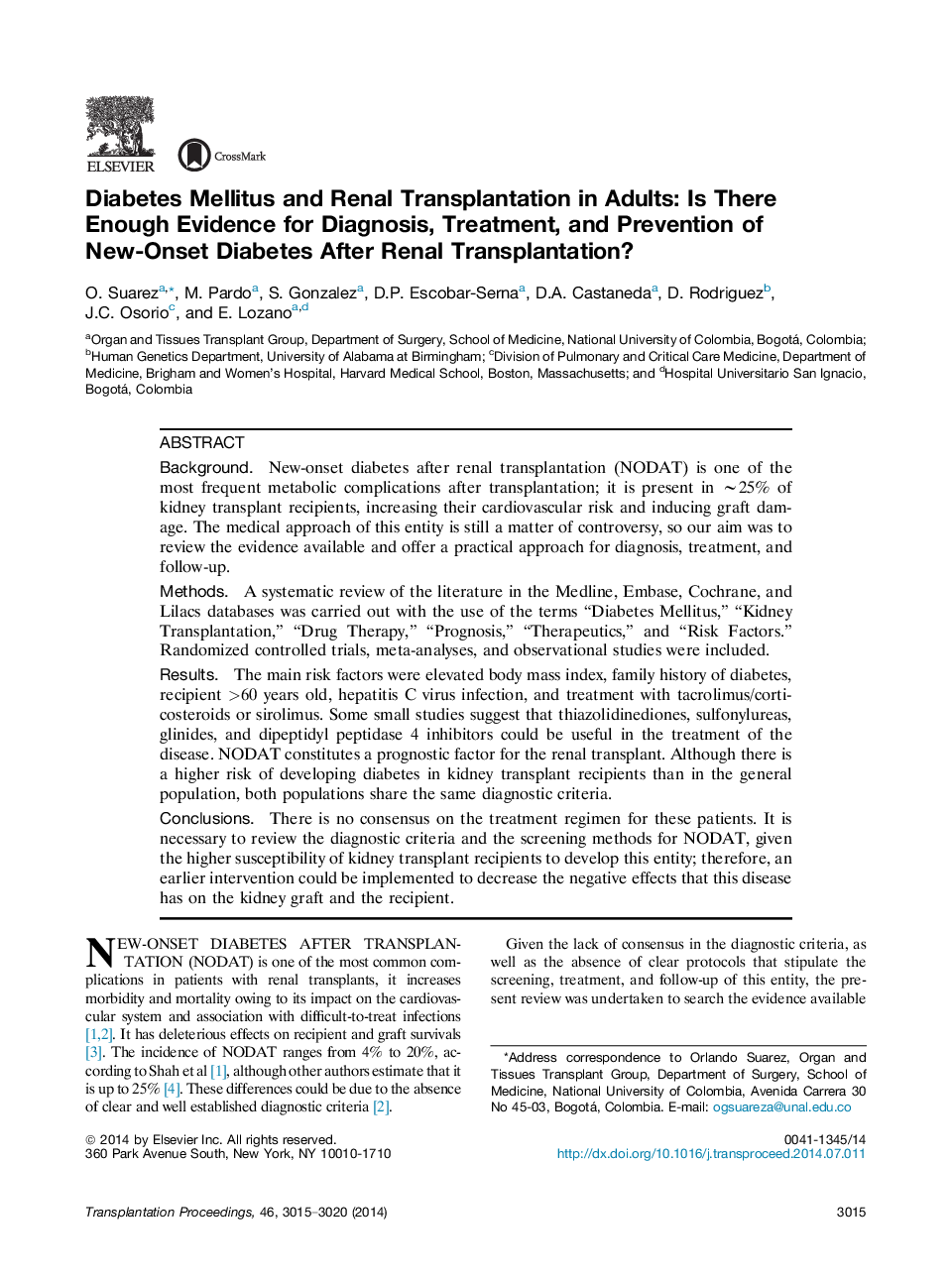| Article ID | Journal | Published Year | Pages | File Type |
|---|---|---|---|---|
| 4256605 | Transplantation Proceedings | 2014 | 6 Pages |
BackgroundNew-onset diabetes after renal transplantation (NODAT) is one of the most frequent metabolic complications after transplantation; it is present in ∼25% of kidney transplant recipients, increasing their cardiovascular risk and inducing graft damage. The medical approach of this entity is still a matter of controversy, so our aim was to review the evidence available and offer a practical approach for diagnosis, treatment, and follow-up.MethodsA systematic review of the literature in the Medline, Embase, Cochrane, and Lilacs databases was carried out with the use of the terms “Diabetes Mellitus,” “Kidney Transplantation,” “Drug Therapy,” “Prognosis,” “Therapeutics,” and “Risk Factors.” Randomized controlled trials, meta-analyses, and observational studies were included.ResultsThe main risk factors were elevated body mass index, family history of diabetes, recipient >60 years old, hepatitis C virus infection, and treatment with tacrolimus/corticosteroids or sirolimus. Some small studies suggest that thiazolidinediones, sulfonylureas, glinides, and dipeptidyl peptidase 4 inhibitors could be useful in the treatment of the disease. NODAT constitutes a prognostic factor for the renal transplant. Although there is a higher risk of developing diabetes in kidney transplant recipients than in the general population, both populations share the same diagnostic criteria.ConclusionsThere is no consensus on the treatment regimen for these patients. It is necessary to review the diagnostic criteria and the screening methods for NODAT, given the higher susceptibility of kidney transplant recipients to develop this entity; therefore, an earlier intervention could be implemented to decrease the negative effects that this disease has on the kidney graft and the recipient.
